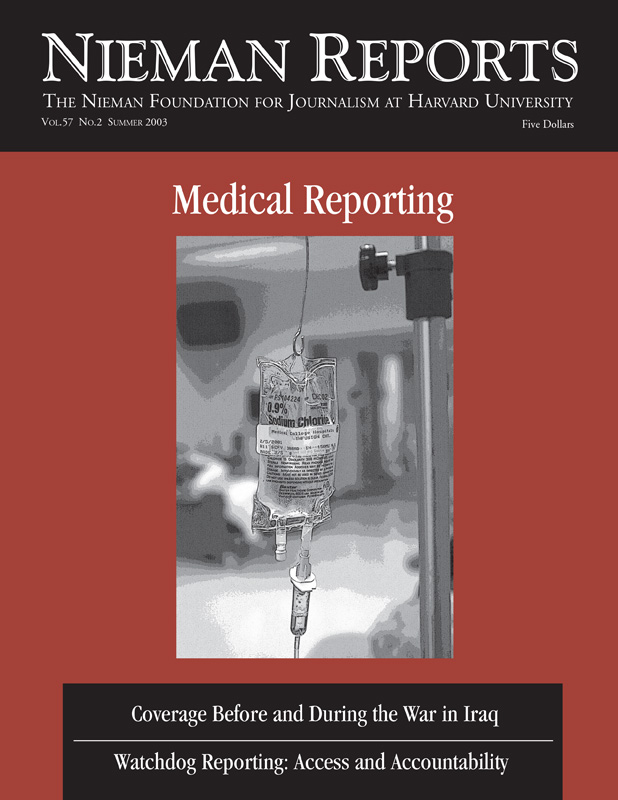“In the 21 years between 1954, when the French were defeated in IndoChina, and 1975, when the combat stopped in Vietnam, 63 journalists were killed. During the fighting in the Balkans from the breakup of Yugoslavia in 1991 to the pacification of Kosovo in 1999, 61 were killed. Since the United States began bombarding Iraq three weeks ago, 12 journalists have been killed or died covering the fighting. If the conflict in Iraq were to last as long as the war in Southeast Asia—and current casualty rates remained constant—4,368 journalists would die ….”
—Los Angeles Times media reporter Tim Rutten, writing on April 9, 2003, “Covering Conflict Exacts a Price.”

“I think the increased danger from so-called friendly fire is one of the major causes of this high casualty rate. It’s made things very dangerous. [Another factor is that] pressure from editors and the home office is much heavier than it’s ever been before in any war, including the Balkans and Afghanistan. When I was a photographer in Vietnam, we didn’t get cell phone calls from London or New York. We were lucky if we got a piece of paper every other week from Saigon. More important, judgment of our work was withheld until we returned from the field. Nowadays, our photographers are at the end of a mobile satellite telephone, and we hurry them from one place to another without respite. We see something on London TV, we immediately contact the closest photographer on the battlefield and ask them to move over there where the action is. Communications have changed every-thing—on the battlefield and at home.”
—Horst Fass, a two-time Pulitzer winner now working out of AP’s London bureau, quoted in Los Angeles Times’s reporter Tim Rutten’s April 9, 2003 article, “Covering Conflict Exacts a Price.”


